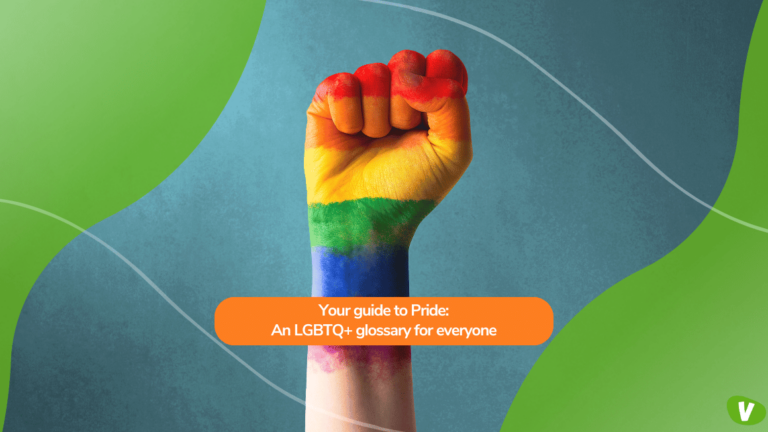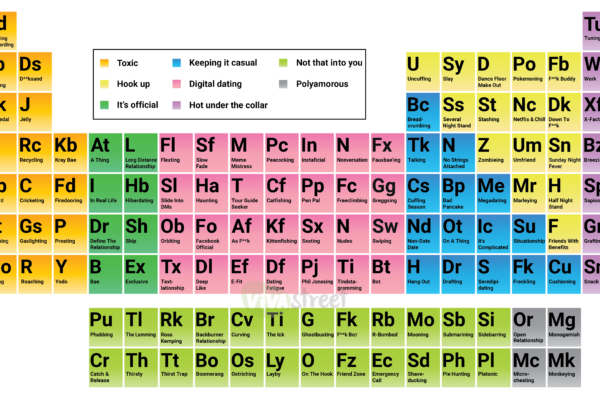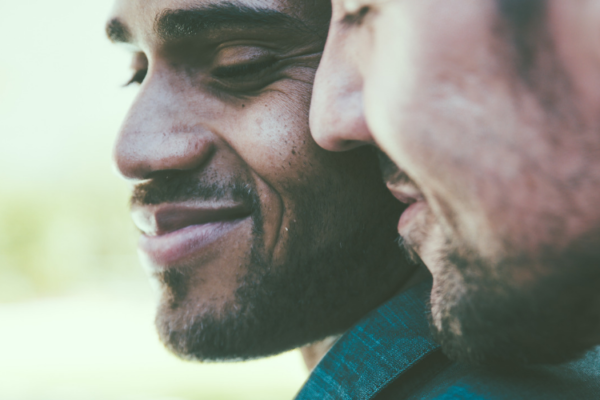Welcome to our Pride Month Glossary, your comprehensive guide to understanding key terms and concepts within the LGBTQ+ community.
As we celebrate Pride Month, it’s essential to recognise the diversity and richness of the LGBTQ+ spectrum. This glossary aims to educate and inform, offering clear definitions and explanations of terms that are crucial to understanding and supporting the LGBTQ+ community.
Whether you’re a member of the community, an ally, or simply curious, this glossary is designed to enhance your knowledge and promote inclusivity and respect.
Keep reading to learn more.
Basic terms
These basic terms provide a starting point for exploring more specific identities and concepts. From sexual orientation to gender identity, these definitions lay the groundwork for a deeper appreciation of LGBTQ+ diversity.
- LGBTQ+: Lesbian, Gay, Bisexual, Transgender, Queer/Questioning, and others (including intersex, asexual, and more)
- Sexual orientation: Describes a person’s physical, romantic, and/or emotional attraction to others (e.g., heterosexual, homosexual, bisexual)
- Gender identity: A person’s internal understanding of their own gender, whether male, female, a blend of both, neither, etc.
- Gender expression: How a person outwardly expresses their gender (e.g., through clothing, behaviour, hairstyle)
Sexual orientations
Sexual orientation is a key aspect of a person’s identity. Understanding these orientations helps foster acceptance and support for everyone’s unique experiences of love and attraction.
- Gay: A person who is attracted to members of the same sex; often used to describe men
- Lesbian: A woman who is attracted to other women
- Bisexual: A person who is attracted to both men and women
- Asexual: A person who experiences little or no sexual attraction to others
- Pansexual: A person who is attracted to others regardless of their gender identity or biological sex
Gender identities
Gender identity goes beyond the binary notion of male and female. Learn about the terms that describe identities beyond traditional categories, and gain insight into the lived experiences of transgender, non-binary, and genderqueer individuals.
- Cisgender: A person whose gender identity matches the sex they were assigned at birth
- Transgender: A person whose gender identity differs from the sex they were assigned at birth
- Non-binary: A person who does not identify strictly as male or female
- Genderqueer: A gender identity that is not exclusively masculine or feminine
- Agender: A person who identifies as having no gender
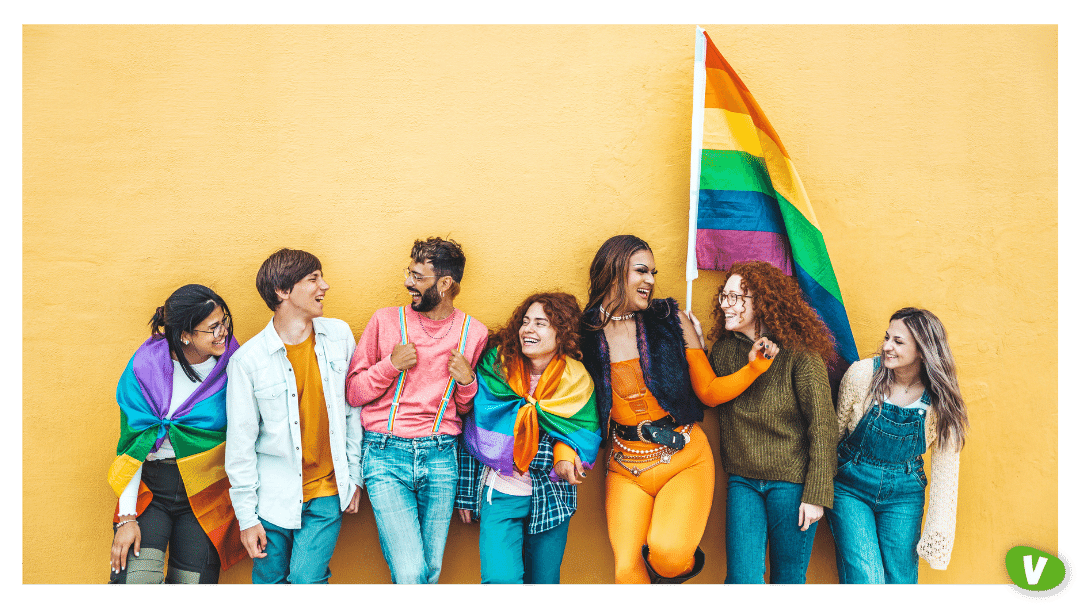
Additional identities
The LGBTQ+ community includes a wide range of identities that go beyond sexual orientation and gender identity. These identities add depth to our understanding of human diversity and enrich the LGBTQ+ community.
- Intersex: A person born with physical sex characteristics that don’t fit typical definitions of male or female
- Two-spirit: A term used by some Indigenous cultures in North America to describe a person who embodies both masculine and feminine spirits
- Queer: An umbrella term used to describe a range of sexual orientations and gender identities outside of heterosexual and cisgender
Important concepts
Understanding the LGBTQ+ experience involves more than just knowing identities; it also requires awareness of significant concepts and practices. These concepts are vital for fostering a supportive and inclusive environment for all.
- Coming out: The process of revealing one’s LGBTQ+ identity to others
- Ally: A person who supports and advocates for the LGBTQ+ community
- Pride: Celebrations and events that promote the self-affirmation, dignity, and equality of LGBTQ+ people
- Pronouns: Words used to refer to someone in place of their name (e.g., he/him, she/her, they/them)
- Chosen family: A group of individuals who are not biologically related but are emotionally close and supportive
Historical terms
The LGBTQ+ community has a rich and complex history and there are historical terms and events that have shaped the movement for LGBTQ+ rights. From the Stonewall Riots to influential figures like Harvey Milk and Marsha P. Johnson, these terms provide context and background to the ongoing fight for equality.
- Stonewall Riots: A series of protests in 1969 that marked a turning point in the LGBTQ+ rights movement
- Harvey Milk: One of the first openly gay elected officials in the United States
- Marsha P. Johnson: A prominent figure in the Stonewall Riots and LGBTQ+ activism
Legal and social terms
Legal recognition and social acceptance are crucial aspects of the LGBTQ+ experience
- Marriage equality: The legal recognition of same-sex marriage
- Don’t Ask, Don’t Tell: A former U.S. policy banning openly gay, lesbian, or bisexual individuals from military service
- Conversion therapy: Practices aimed at changing an individual’s sexual orientation or gender identity, widely discredited and condemned
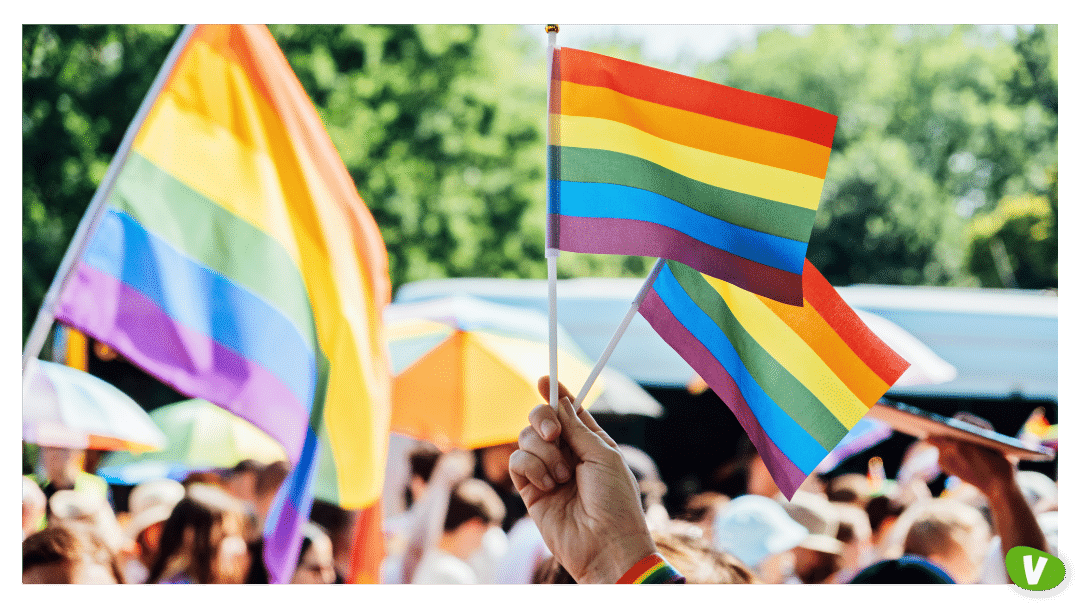
Health and well-being
The health and well-being of LGBTQ+ individuals are often influenced by unique challenges and needs. Understanding these terms is essential for promoting the overall well-being of the LGBTQ+ community.
- HIV/AIDS: A disease impacting many in the LGBTQ+ community, particularly during the early epidemic
- Mental health: The psychological well-being of LGBTQ+ individuals, including challenges such as discrimination and stigma
- Inclusive healthcare: Medical care that respects and addresses the unique needs of LGBTQ+ patients
Celebrations and symbols
Pride Month is a time of celebration, and symbols play a significant role in expressing identity and solidarity. From the rainbow flag to Pride parades, these terms capture the spirit and vibrancy of the community.
- Pride flag: The rainbow flag, a symbol of LGBTQ+ pride
- Pride Month: Celebrated in June to honour the Stonewall Riots and promote LGBTQ+ rights.
- Coming Out Day: Celebrated on October 11th, encouraging LGBTQ+ individuals to “come out” to their loved ones and community
The takeaway
Pride Month is not only a time for celebration but also for education and reflection. It is an opportunity to recognise the progress that has been made in the fight for LGBTQ+ rights and to acknowledge the work that still needs to be done. Understanding the language and identities of the LGBTQ+ community is a crucial step in this journey.

